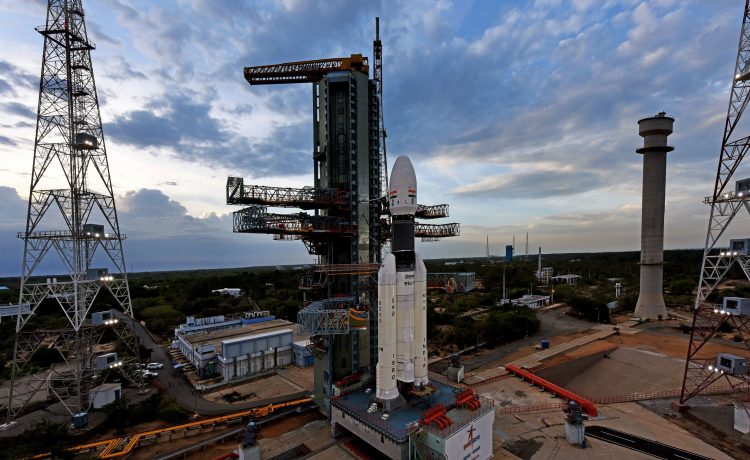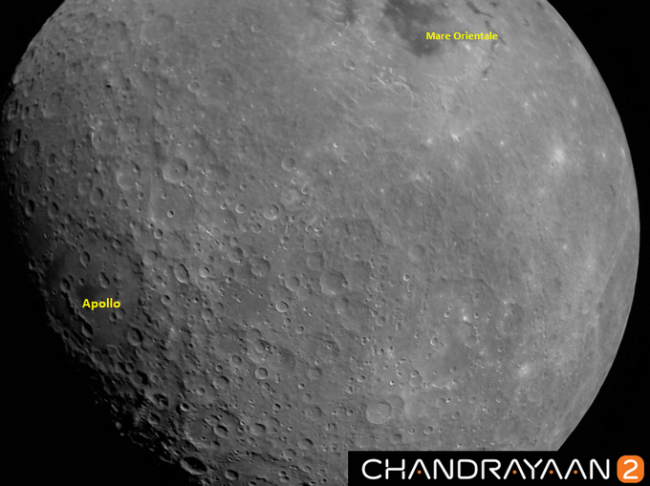India’s Chandrayaan-2 mission is in orbit around the moon, and its view is spectacular. The spacecraft entered lunar orbit on Aug. 19 (Aug. 20 local time at mission control in India), about a month after its launch, on July 22. In order to make the journey more feasible with a smaller rocket, the spacecraft took a long road to the moon, with about seven weeks between launch and the scheduled touchdown of the mission’s lander and orbiter.
The Indian Space Research Organisation (ISRO), which runs the Chandrayaan-2 mission, has now released the spacecraft’s first image of the moon taken from orbit. That image was snapped from about 1,650 miles (2,650 kilometers) above the lunar surface on Wednesday (Aug. 21). The photograph shows part of the far side of the moon, including Apollo crater and Mare Orientalis.
But that region is not Chandrayaan-2’s destination. An orbiter will separate from the Indian mission, and then the lander, with a rover tucked onboard, will head toward a location much closer to the moon’s south pole, with landing scheduled for Sept. 6 (Sept. 7 local time at mission control).
The ISRO chose that destination in part based on the findings from the mission’s predecessor, which carried the instrument that spotted water ice frozen in permanently shadowed craters near the lunar south pole. And so India built a second mission, adding a landed component this time, to follow up on that discovery.
If the lander safely touches down, India will become the fourth country to complete that feat, after the Soviet Union, the U.S. and China. The lander and rover would operate for one lunar day but are not designed to withstand the frigid lunar nights.







